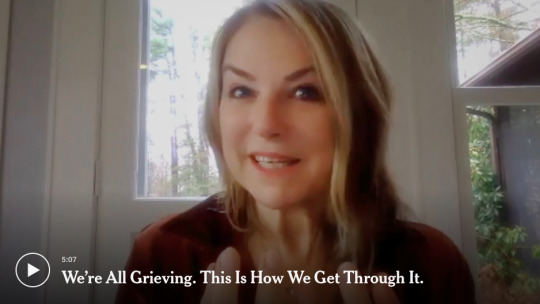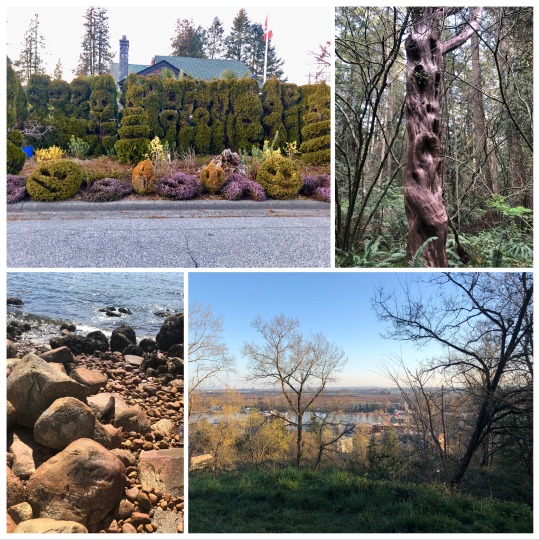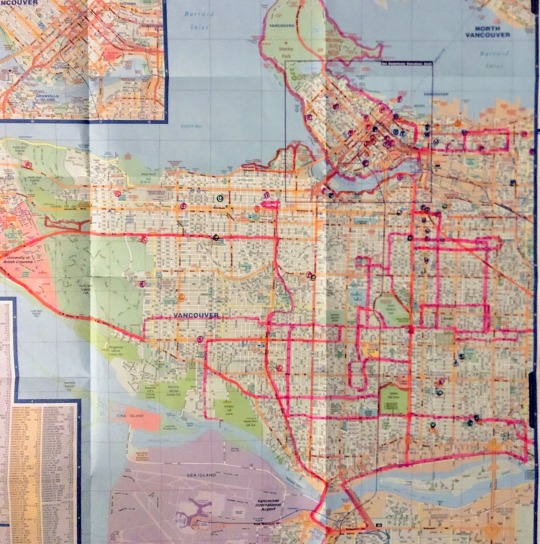#transformers The Four Quadrants of Disaster
Explore tagged Tumblr posts
Text

New Au that will be about war and more….“They will come to destroy all the Transformers.”
Sin the representative of chaos and hunger
Guilt the representative of sin and death
Krieg the representative of war and madness 
Fend\cure the representative of disease and poison…..but…..she is the one who heals and lives
#art#drawing#artwork#fanart#au#maccadam#transformers#oc#tf#transformers The Four Quadrants of Disaster
11 notes
·
View notes
Text
April 27, 2020
Art Became the Oxygen

It is true that artists, many of whom rely on public gatherings for their livelihood, are some of the hardest hit during this crisis. Yet, it’s musicians who are toiling away in basements to serenade us through isolated days. It’s comedic actors who are offering us essential nighttime laughs. And it’s visual artists who make meaning from this madness with images that inspire, console and provoke. The individuals of the creative community are like the unsung frontline workers of this pandemic, only without any salary to support their craft, or a 7 pm cheer to motivate them. Yet still, they make things because they must, just as artists have done since the beginning of history, particularly in times of strife. (SEE: https://usdac.us/news-long/2017/8/9/art-became-the-oxygen-free-artistic-response-guide-available-now)
In previous periods of economic hardship, the US government responded with forward-thinking programs like the WPA (Works Progress Administration) of Roosevelt’s New Deal (1935 to 1943). It was designed not only to fund huge infrastructure projects, but also to employ thousands of artists, musicians, writers, and theatre performers to stimulate the economy. Legacies of this program include Zora Neale Hurston’s Their Eyes Were Watching God; Jackson Pollack’s Composition with Pouring; and Mark Rothko’s earlier urban studies like Entrance to Subway, where you can see the seeds of his famous color studies from later work.

After natural disasters, senseless violence or war, artist activists have also rushed to the front lines, time and again, to help rebuild communities by activating their social imaginations and stimulating their civic agency with creative collaborations.
Philippe Thiese gathered digital stories of Hurricane Sandy volunteers in this short film: https://www.sandystoryline.com/stories/sandy-volunteers-remember-the-storm-and-explain-how-they-got-involved/.
The siblings of Eric Garner, a young African-American man killed by unjust police violence in 2014, came together in grief to write the song, I Can’t Breathe,based on his harrowing last words. Their music served as a rallying cry to a community berieved and betrayed by their law enforcement: https://www.rollingstone.com/music/music-news/eric-garners-family-drops-moving-new-song-i-cant-breathe-192574/
And when a 2011 tornado took 161 lives in the small town of Joplin, Missouri, mural artist Dave Loewenstein asked kids about their dreams for the future of their town, resulting in this stunning piece, The Butterfly Effect.

So, in the great hope that we’ll kick this virus’ butt, and we will be left with a glut of ventilators, how about we use them to revive our society’s artists, since they are the vital oxygen that feed our souls.
In Vancouver, we are already lucky enough to have our City government responding with funding for the Murals for Hope project (#makeartwhileapart), which is transforming solemn, boarded-up shops and restaurants into colorful and encouraging messages that can help sustain us until their doors reopen again.




Geoff and I are also trying to do our small part to stimulate the creative economy, while beautifying our home in the process. We are very excited to have just commissioned a mural artist to spruce up our tiny backyard space, which we’re transforming from a gravel parking spot into our own tropical oasis. Here are some inspirational images as well as a shot of the yard in its current state. And hopefully, I can post the finished product, which will be painted onto the rotting fence, in a couple of weeks.

April 28, 2020
Art of Relationship

This period is not just requiring us to get creative with keyboards and canvases and cameras. It is forcing us to re-examine the very patterns that make up our daily lives and fit them all inside the same four walls with the same self, spouse, and/or kids, 24/7. Suffice it to say, this is no small task. But, if any of you are like me, the grand solutions have sometimes involved tiny changes.
Personally, my greatest challenge has been to find ways to carve out slivers of shared pleasure amidst my partner’s insanely stressful, often 13-hour work day, now that the pandemic has his team at our local transit authority in serious crisis mode. Of course, I’m a firm believer in hard-work. The pursuit of a classical musician requires many years of 5+ hours-a-day of practice. But I’m also a fun-lover, and a huge proponent of life/work balance, particularly having had to learn this the hard way, thru a chronic overuse injury. So, for me, Geoff’s manic schedule during the first month of isolation seemed far from optimal. And while this was especially difficult for him, it compromised joy for both of us.
Seeking guidance as we adapted to the new normal, we found a great online series by Esther Perel, whose regular podcast, Where Should We Begin? always leaves us with sound, simple dance steps that we can apply to the Art of Relationship. Here, she has created a 4-part series that specifically addresses problems which co-habitators might face in our current reality. https://events.estherperel.com/april-2020-webinar-resources/?fbclid=IwAR0kRHkuQvEGxcpNuHvPKmmExamZ2Jj_EMZzR-zGp8eDejCR94hE-ZvGYjY
Inspired by her wisdom, we decided that the 7:30 am meetings, which had been occupying our kitchen and bleeding into our morning coffees, every day, could be skipped for a 15-minute walk thru our neighborhood park. And, let me tell you, what a difference a quarter of an hour can make!
April 29, 2020
Finding Variety in Repetition

It occurred to me, the other morning, that this experience feels a bit like fasting. Since college, I’ve routinely devoted a week, every spring, to some kind of dietary shift, for my general health, and as a general mindfulness exercise. While I’ve tried versions of the Wild Rose and other popular cleanses with some benefit, the method recommended in Staying Healthy with the Seasons has always suited me best. It requires you to slowly wean off many foods (meat/fish, then sugar/alcohol/coffee, then dairy), gradually move to only liquids, eventually evolve to a middle day of just water, and then similarly reintroduce each food gradually. What I’ve loved about this approach is how much more aware of my cravings I become, how much I notice the “manufacturing of consent” that happens all around me to inspire my “wants”, and finally how various symptoms are suddenly absent once I’ve eliminated certain foods. Consequently, the slow reintroduction of foods allows me to notice, in much more specific detail, which foods stimulate which responses in my body (IE. huge bursts of energy from fruit; afternoon crashes from sugar; indigestion from soy; sustenance from bread and pasta - NOTE: Contrary to the wheat-vilifying trends that currently prevail, I typically thrive on an anti-Atkins diet, as someone who reaps tremendous fuel from carbs).
The parallels we are experiencing now relate to the stimuli that we’ve been “denied” by our self-isolating reality. Speaking for myself, instead of travelling frequently, as I often do, or eating at different restaurants every week, or working at a different café every day to switch up the creative energy around me, I have had, like everyone else, to learn to find sustenance and interest in a much less diverse set of circumstances. I am eating at Chez Me three meals a day. We are grinding our own beans and whipping up our own daily lattes. And most all of our daily walks and bike rides now start from our home.
But even within the boundaries that we can reach from the nexus of our own address, we have been able to slowly expand our radius of exploration to corners of our city that we had never seen before. This has felt a bit like switching to a vegetarian diet and gaining new appreciation for the crunchiness of a snap pea, or the filling nature of a portabello mushroom.

In these explorations, we have discovered infinite surprises which include a cliffside view of the Fraser River from Everett Crowley Park (top image), an old landfill-turned-lush green space in Vancouver’s southeastern-most quadrant. We’ve seen old growth forest that we had no idea existed so many kilometres from the shore, in Burnaby’s Central Park on our city’s eastern border. I’ve spotted my first-ever fisher (weasel) sneaking around beachside boulders on the northern edge of the city. And closer to home, I’ve noticed the whimsy of our neighbors’ gardens in far greater detail than I had ever looked before (as in the Gaudiesque, smiley-face hedge pictured above). Our ventures from home have been guided by little more than our edict to “follow the pink”, as in the most blossoming streets. And to document these journeys, I’ve been mapping the various routes we’ve taken. Interestingly, the trajectory somewhat resembles a many-petaled flower.

Looking for minute changes in what seem to be patterns of sameness is also the secret to one of my favorite movements in music and design: Minimalism. Perhaps this is why Max Richter and Steve Reich have become the soundtrack I’ve turned to most during the pandemic. Because their music trains our brains to find beauty in repetition while seeking excitement from the subtlest nuanced shifts.
Meanwhile, I know that many of us would love for there to be a magic wand that could lift all of our restrictions over night and allow us to return to exactly “the way it was before”, in the same way that I long for a mocha frappuccino when I fast. However, what we have been hearing from our leaders is that the more likely and safe choice will be to move into a gradual re-opening of our cities - a slow reintroduction of certain freedoms. So, the lessons we can learn from fasting and Phillip Glass ought to prove very useful as we try to be patient and appreciative of this prudent approach. Then, once we begin to shop and drive and socialize more, perhaps this perspective can allow us to also more clearly notice how we respond to each stimuli as we re-engage with it, And hopefully it will inform a new normal that can be more sensible and moderate and in harmony with this planet that we call home.
And, in case you’re curious to listen to a little minimalist fare...
Notice how welcomed the first chord change is in Max Richter’s Catalogue of Afternoons: https://www.youtube.com/watch?v=Ubjylmxrj9o
Or drape yourself in his hypnotic music like a warm duvet with his 8-hour lullaby, Sleep: https://open.spotify.com/album/0JLN7JryQ2T7lBEYIrSQF1
And for a mind trip of the eyes and ears, try Steve Reich’s Piano Phase on marimbas: https://www.youtube.com/watch?v=W3QoM7dgs_0
April 30, 2020
Film Festivals for free

Pahokee, at this year’s live-streamed Vancouver International Film Festival
Done wondering if Carol Baskin killed her husband? Couldn’t care less if Giannini and Damian actually ever get married? Well, for those who’ve exhausted the Netflix catalogue, there are plenty of other ways to enjoy film from your home. Lots of festivals have generously uploaded their content online. So, whether it’s mountain adventure, short films, foreign movies, or arthouse you’re looking for, here are some easy ways to link to those that are totally free:
Banff Mountain Film Festival - https://www.banffcentre.ca/film-fest-at-home
Cannes, Sundance, Tribeca, Toronto, Venice, Berlin and others have collaborated to bring an awesome line-up of livestream videos to the world in their 10-day We Are One Festival, starting on May 29th. While the festival will stream for free, viewers will be asked to donate to the World Health Organization’s Covid-19 solidarity response fund.
If you happen to remain gainfully employed, and it’s important to you to keep supporting independent film making, Vancouver International Film Festival has created a rental-fee structure for a number of films that they’ve now made available for streaming, too: https://viff.org/Online/default.asp
And Sedona Film Festival has done the same - https://sedonafilmfestival.com/mdfhome/
May 1, 2020
Boredom Killers: Ping-pong, birthday song, and Magritte gong wrong

Combing the internet for creative inspiration that I can share with readers has truly been a joy. It’s also got our own creative jucies flowing. So today, I thought I’d post just a few of the ways we’ve staved off boredom over these past weeks.
Tennis is one of our true passions. It’s actually sort of how Geoff and my relationship began. Given that we didn’t want our paddle skills to get too rusty, we didn’t let the fact that our little laneway house couldn’t fit a ping pong table stop us: https://www.youtube.com/watch?v=kait-zCV94s
Coming from a huge birthday-celebrating family, I’ve tried to make sure that friends with birthdays during quarantine could still feel pampered on their special day. So, 6 of us put together this silly ditty for our good friend Roger: https://youtu.be/EZKyrdOlvPk
And, we’ve jumped on the art replication bandwagon too. The Met & the Getty Museum have both followed the lead of the Dutch gallery that first initiated the Instagram art challenge which asks people to recreate famous pieces of art with only 3 objects from their home. https://www.instagram.com/tussenkunstenquarantaine/
Here’s Geoff and my attempt with Magritte’s Lovers. The challenge also asks for participants to create new titles, so this is ours, Kissing Strategy for Stay-at-home Lazy Toothbrushers.

0 notes
Text
New Managed IT Services Provider RE-INVIG Launches
Start-up will serve four tech cities with curated blend of Citrix’s VDI, UCaaS and Cloud services and support.
Tech entrepreneur Ryan Ybarra today launches RE-INVIG: an exciting new MSP with a carefully curated selection of market-leading Cloud, Citrix VDI and integrated UCaaS services.
RE-INVIG will initially launch in four US locations with established tech sectors: Greater Los Angeles CA, and the cities of Orange County CA, Las Vegas NV, and Austin TX.
Ryan Ybarra commented:
“I’m excited to launch RE-INVIG with the goal of creating a new type of managed service provider; a reliable, expert partner built with an unshakeable commitment to delivering customer service excellence.
“Between us, the RE-INVIG leadership team has more than 50 years’ experience in this sector. We launched RE-INVIG because we recognize the desperate need of clients to find a supplier in this space who delivers a white glove personal approach to understanding and servicing customer requirements. RE-INVIG will combine technical and service excellence while improving the way customers are able to interact with their IT partner.”
RE-INVIG will initially focus on delivering Citrix’s Virtual Desktop Infrastructure solutions together with Unified Communications as Service solutions. It will deliver these services by working with a select group of partners. At launch, RE-INVIG is partnering with Star2Star and iland.
This combination of partners enables RE-INVIG to offer an integrated offering that will cover abroad swathe of all essential IT services that any SME could require.
Ryan Ybarra said:
“We’re delighted to be partnering with these companies. Not only do these partners enable us to offer industry-leading solutions to our clients, but we have chosen them because of their proven track records in delivering to high customer service standards and the ability to constantly innovate IT solutions for today’s business needs.
“The beauty of this technology portfolio is that it will enable us to effectively offer a full spectrum of essential office services to our clients. This includes a highly feature-rich unified communications system for phones and Internet, integrated services for virtual desktops that include email, office and productivity tools, and award-winning Cloud provision for storage, backup and disaster recovery/ business continuity.
“Our customers will be able to rely on us for all of their business IT. This offers them significant advantages because they have a single point of contact for all their support, customer service and
consultancy for the whole of office IT. This makes us an obvious choice for SMEs who want to access best-of-breed IT and comms with minimum hassle.”
RE-INVIG’s partner Star2Star offers an unparalleled full-spectrum communications solution; an end-to-end communications system which is unmatched in the industry. Customers enjoy the highest quality calls and 5x9s uptime, as well as advanced unified communications (UC) features. They also provide Citrix as the world’s leading virtual desktop infrastructure solution.
iland is a global cloud service provider of secure and compliant hosting for infrastructure (IaaS), disaster recovery (DRaaS), and backup as a service (BaaS). It is recognized by Gartner as a leader in disaster recovery for its fourth consecutive year in the Gartner 2019 Magic Quadrant. Its award-winning iland Secure Cloud Console natively combines deep layered security, predictive analytics, and compliance to deliver unmatched visibility and ease of management of its cloud services.
RE-INVIG will augment this technology portfolio with consultancy and support services, as well as offering a single point of contact for billing and support for its customers – thereby helping to simplify IT services for all its clients.
For more information, please contact at: [email protected] or visit https://re-invig.com/
ABOUT RE-INVIG
RE-INVIG delivers enterprise-quality communications and cloud solutions for small and mid-sized businesses. It offers an industry-leading collection of integrated VoIP, Unified Communications, Cloud, Productivity, Citrix’s VDI and back-up solutions to create an integrated IT services portfolio that can be tailored to meet any organization’s unique requirements. A new breed of managed services providers, RE-INVIG seeks to transform the customer experience as a single point of contact for all organizational IT and connectivity requirements with an unparalleled commitment to delivering customer service excellence.
Media Contact
Company Name: RE-INVIG
Contact Person: Scott Desmet
Email: Send Email
Phone: 1-877-RE-INVIG
Address: 414 S. Indian Hill Blvd. #33
City: Claremont
State: California 91711
Country: United States
###
#Managed IT services#Backup as a Service#Disaster Recovery as a Service#Citrix Virtual Desktop Provider
0 notes
Text
How Presidents Choose to Lead
Learning From Our Commander-in-Chiefs' good choices, and bad ones
There’s no more fascinating or scrutinized topic in American history than presidential leadership. So much is at stake in a president’s decisions. And yet presidents are mere mortals. Though they have teams of advisors and the best resources at their disposal, they’re just as prone as the rest of us to making short-sighted choices. When they do, the results can be grim.
Episodes of presidential leadership generally fall into four quadrants. Presidents may be forced into making good or bad decisions by circumstances, or they may make good or bad decisions by their own initiative. I’ll examine examples of each in history, from the founding of the nation to our current era.
What Abraham Lincoln decided
We tend to praise presidents the most highly for leading effectively in desperate situations. All leaders know that tidal waves of unforeseen circumstances sometimes hit, requiring them to steer the organization (or even a nation) through the turmoil. The most celebrated example of such courage under duress in American history was Abraham Lincoln. Lincoln entered the presidency facing the nation’s greatest crisis: southern secession and the prospect of Civil War. Lincoln had virtually no executive experience, but he rose to the occasion, with a steely determination to save the American Union.
“ There’s no more fascinating or scrutinized topic in American history than presidential leadership. So much is at stake in a president’s decisions.
—THOMAS KIDD
Not that Lincoln was perfect. He struggled to find the right military leaders, as Robert E. Lee and Stonewall Jackson made a mockery of the Union army in the first years of the war. But Lincoln learned through the trials, and he finally elevated Ulysses Grant as the commander who could face down Lee.
Perhaps Lincoln’s most brilliant stroke was emancipating the slaves. In doing this, he used unexpected circumstances to take an equally unexpected initiative. Few people, even in the North, envisioned emancipation as an outcome of the war. When elected, Lincoln did not believe that the president had the power to unilaterally free slaves. Lincoln always saw preservation of the Union, not emancipation, as the main goal of the war. But by 1862, he realized that emancipation could help him save the Union. Thus, exercising his power as commander-in-chief of the armed forces, he announced that slaves in the South were free. He encouraged them to abandon their masters and join the Union military, which they did in droves.
Andrew Johnson’s stubborn folly
We don’t know whether Lincoln would have thrived as a decision-maker after the war was over, because he was felled by an assassin. But we can assume that he would have done better than his successor, Tennessee’s Andrew Johnson. A series of bad decisions amidst difficult circumstances made Johnson one of the worst presidents in American history. In the aftermath of the war, congressional Republicans pushed to secure basic legal rights for the freed slaves. But Johnson did everything he could to stop such reforms.
The opportunities for liberty presented by Reconstruction bogged down into a petty political war within the northern-dominated federal government. This finally precipitated an ugly attempt to impeach and remove Johnson in 1868. Johnson narrowly avoided removal, but the impeachment crisis drained all remaining momentum out of his presidency. A victim of his stubbornness, Johnson hardly rose to the occasion under difficult conditions.
Seizing the moment
Other presidents have distinguished themselves by making valuable changes that their circumstances did not necessarily require. These leaders sensed opportunities that others might not have. One example of this was Thomas Jefferson’s Louisiana Purchase in 1803. It was not clear that the U.S. had the power under the Constitution to acquire new territory, and Jefferson had previously been quite cautious about expanding the young federal government’s powers. Jefferson’s administration had been working quietly to acquire just the city of New Orleans, but suddenly it became clear that the French might cede the vast Louisiana Territory (most of the land from the Mississippi River to the Rocky Mountains). Jefferson captured the moment, getting the Senate to approve the purchase for $15 million, or 3 cents an acre. It was arguably the best deal ever made by the U.S. government.
In more recent history, Lyndon Johnson also showed remarkable initiative in securing landmark Civil Rights legislation. As a white southern Democrat from Texas, he was not the most likely champion of this transformation (in those days, southern Democrats typically opposed Civil Rights reform). President John Kennedy had originally proposed the Civil Rights Act in 1963, but before his death it was stalled in Congress. Johnson poignantly cited Kennedy’s assassination to push the bill through Congress in 1964. Johnson proclaimed that “no memorial oration or eulogy could more eloquently honor President Kennedy’s memory than the earliest possible passage of the civil rights bill for which he fought so long.” After the nation’s long night of Jim Crow discrimination, the Civil Rights Act supplied legislative tools to fight discrimination based on race, sex, or religion in America.
“ After the nation’s long night of Jim Crow discrimination, the Civil Rights Act supplied legislative tools to fight discrimination based on race, sex, or religion in America.
—THOMAS KIDD
Misreading the moment
Ironically, Jefferson and Johnson also initiated bold interventions that turned out to be disasters. In his second term, Jefferson dealt with tensions between the U.S. and Britain which would soon lead to the War of 1812. The British navy was harassing American ships and taking sailors captive. Jefferson’s solution seemed reasonable at first: he embargoed U.S. trade with Europe. Jefferson hoped that this would create hardship for Britain and France, but it had the opposite effect. The embargo boosted European trade with the rest of the Americas, and nearly wrecked the U.S. economy.
For his part, Johnson’s ill-fated decision to escalate American involvement in Vietnam destroyed his presidency. Johnson had not originally intended to do this, but he felt obligated to save South Vietnam from communist takeover. So he got the U.S. more and more involved in South Asia until the prospect of failure risked national humiliation. When the 1968 Tet Offensive showed that Vietnamese communist forces remained formidable, the American public realized that Johnson had led America into a quagmire that cost many American and Vietnamese lives. What was especially galling to many Americans was how pointless the war in Vietnam seemed in retrospect. The exhausted Johnson announced in 1968 that he would not run for re-election.
Choices and consequences
Episodes of presidential leadership generally fall into these four categories: good and bad decisions precipitated by unforeseen circumstances, and good and bad decisions taken on a president’s own initiative. Events shape a president’s course, but sometimes a president takes the lead by his own choice. Either way, the wise and foolish choices that our leaders make define their presidencies and our nation.
from Michael Hyatt, Your Virtual Mentor https://ift.tt/2udLB8s via IFTTT
0 notes